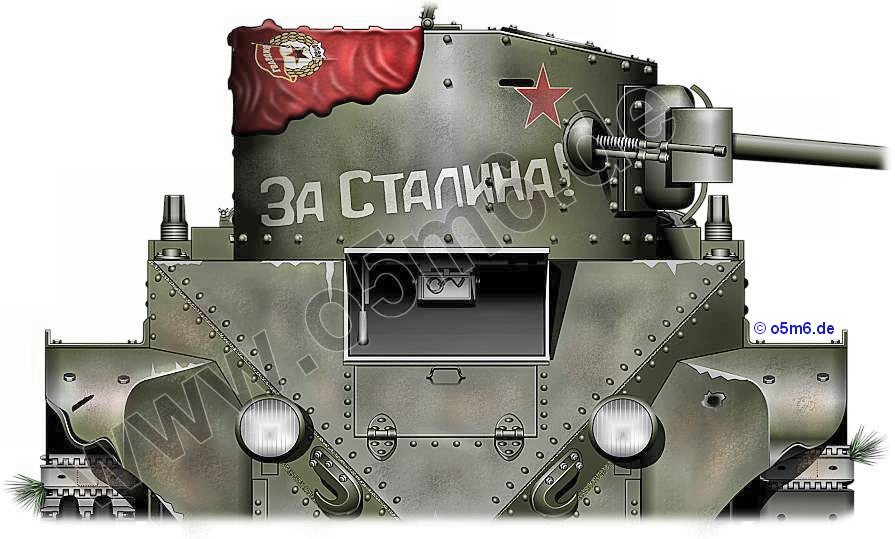
BT-2 Fast Tank
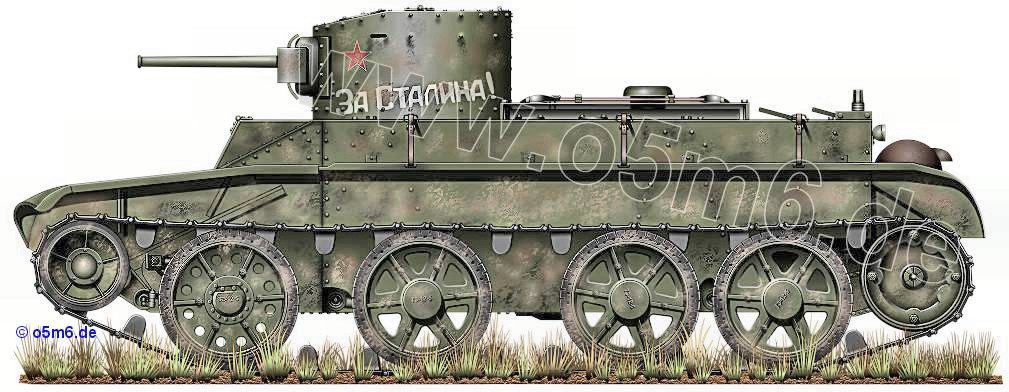
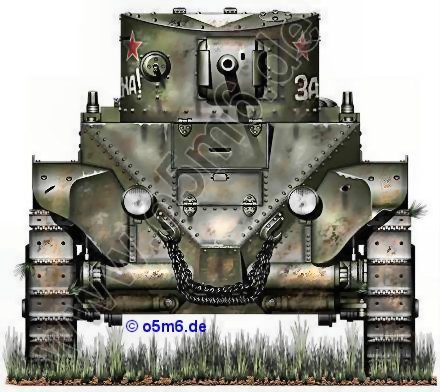
BT-2 Fast Tank
In 1930, the controversial and eccentric American designer J. Walter Christie was having a great deal of difficulty selling his new designs to the US Army.
The problems stemmed from the miniscule US Army tank budget as well as Christie's difficult personality and his lack of patience dealing with the turgid US War Department. In contrast to the penny-pinching War Department.
The Russians offered Christie cold cash for his design and licence rights for manufacture in the Soviet Union.
Christie boasted at one point that he received $3,000,000 from the Soviet Union for production rights (as compared to his request for $90,000 for production rights from the Poles).
Soviet engineers began visiting the Christie factory in 1930 to become acquainted with the design features and to begin planning production.
The problems stemmed from the miniscule US Army tank budget as well as Christie's difficult personality and his lack of patience dealing with the turgid US War Department. In contrast to the penny-pinching War Department.
The Russians offered Christie cold cash for his design and licence rights for manufacture in the Soviet Union.
Christie boasted at one point that he received $3,000,000 from the Soviet Union for production rights (as compared to his request for $90,000 for production rights from the Poles).
Soviet engineers began visiting the Christie factory in 1930 to become acquainted with the design features and to begin planning production.
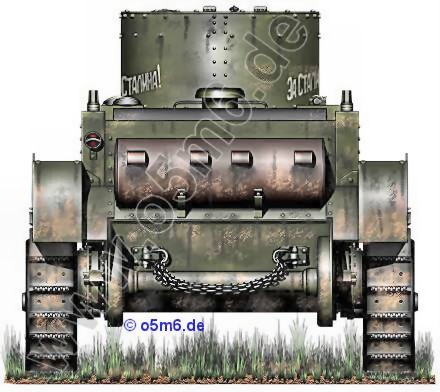
The US Army knew little of these adventures in capitalism, and Christie shipped two M 1930 chassis out of the US by ship in December, 1930 by telling the State Department that they were agricultural tractors, much to the chagrin of American Authorities.
The two M 1930 chassis arrived at the Kharkhov Locomotive Works im. Kominterm (KhPZ-later given the military designation Zavod Nr. 183) in 1931 where the design teams were already preparing to assemble the first Russian made Christies.
On 23rd May, 1931 the Revolutionary War Council decided to accept the Christie for Red Army use even though the first Russian prototypes were not yet ready.
The Russian built Christies were called BT (Bystrokhodnyi Tank, literally "Fast Tank"), with the designation BT-1 being reserved for the two American prototypes, and BT-2 for the first Soviet production models.
The first three unarmed prototypes were completed in October 1931 and took part on the 7th November Parade that year in Moscow.
The two M 1930 chassis arrived at the Kharkhov Locomotive Works im. Kominterm (KhPZ-later given the military designation Zavod Nr. 183) in 1931 where the design teams were already preparing to assemble the first Russian made Christies.
On 23rd May, 1931 the Revolutionary War Council decided to accept the Christie for Red Army use even though the first Russian prototypes were not yet ready.
The Russian built Christies were called BT (Bystrokhodnyi Tank, literally "Fast Tank"), with the designation BT-1 being reserved for the two American prototypes, and BT-2 for the first Soviet production models.
The first three unarmed prototypes were completed in October 1931 and took part on the 7th November Parade that year in Moscow.
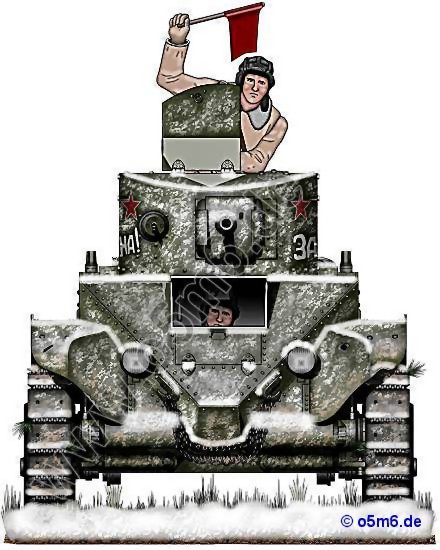
The Christie was a convertible tank.
The rear set of road wheels were powered from the drive sprocket using a simple chain drive, so that the trackcould be removed and the vehicle run on its wheels.
This was done not only because of the higher speeds possible on wheels, but also because track design at this time was not very advanced and track breakdown after very short drives was a very serious problem.
The BT could be used in the wheeled mode while on road marches approaching the battlefield, but for cross country travel, the tracks had to be used.
It took the crew about 30 minutes to change from the tracked to wheel mode. Road speed on wheels was about 110 km/h at maximum, or 62 km/h on roads or hard terrain using tracks.
In 1932 KhPZ began quantity production of the BT-2.
The rear set of road wheels were powered from the drive sprocket using a simple chain drive, so that the trackcould be removed and the vehicle run on its wheels.
This was done not only because of the higher speeds possible on wheels, but also because track design at this time was not very advanced and track breakdown after very short drives was a very serious problem.
The BT could be used in the wheeled mode while on road marches approaching the battlefield, but for cross country travel, the tracks had to be used.
It took the crew about 30 minutes to change from the tracked to wheel mode. Road speed on wheels was about 110 km/h at maximum, or 62 km/h on roads or hard terrain using tracks.
In 1932 KhPZ began quantity production of the BT-2.
There were two standard production models: The gun armed version used the Model 30 37mm tank gun together with a ball mounted turret machine gun to the right of the main gun. The machine-gun armed version usedthe same manlet as the gun armed type, but had two DT tank machine-guns instead, adding up to three machine-guns in the turret.
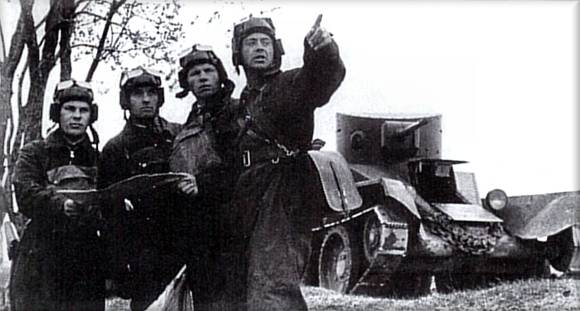
During 1932, KhPZ manufactured 396 BT-2, and a small number were manufactured in 1933.
The BT-2 was well appreciated by the Red Army as among its first modern tanks (the other being the T-26, a copy of the Vickers 6 ton export tank), but it was plagued with a host of problems.
The machine-gun armament was not viewed with favour, and the separate ball mounting for the turret DT machine-gun was awkward.
The fighting compartment with its two-man crew was too cramped, and the imported Liberty aeroplane engines were capricious.
It's worth noting that at the November 7th parade in Moscow in 1932, two of the 10 pampered BT-2's broke down.
Source : Steven Zaloga and James Grandsen, »Soviet Fast Tanks«, Military Modelling Jan/Feb 1982.
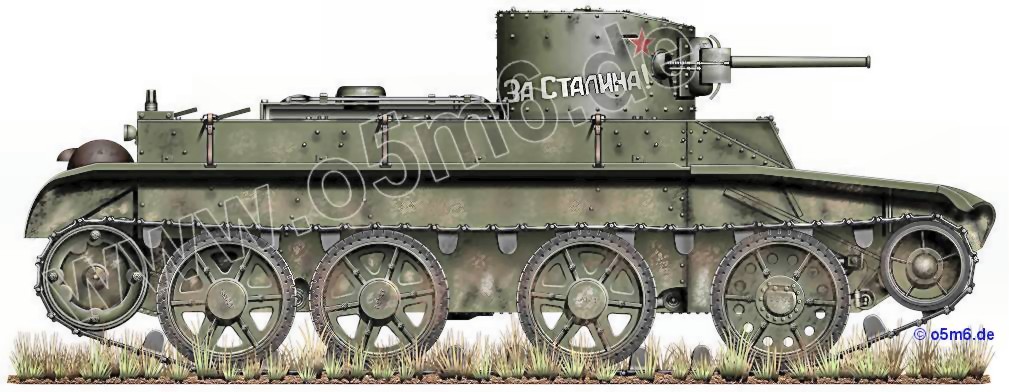
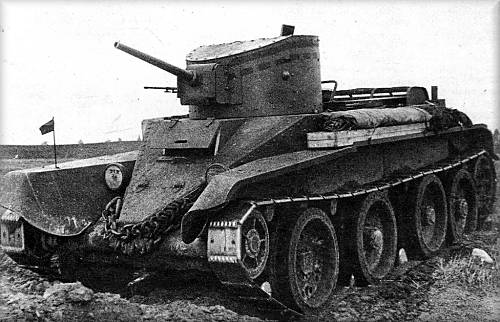
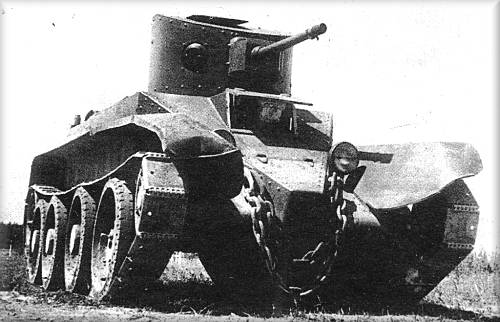
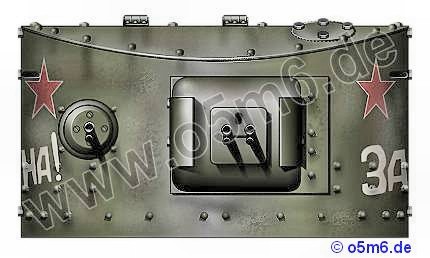
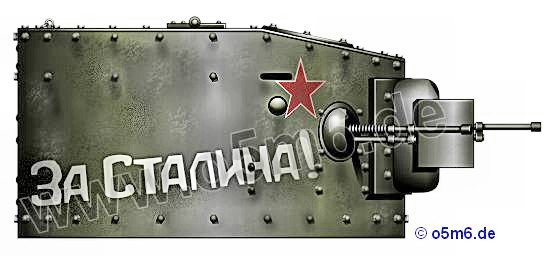
Old-style turret with double machine gun
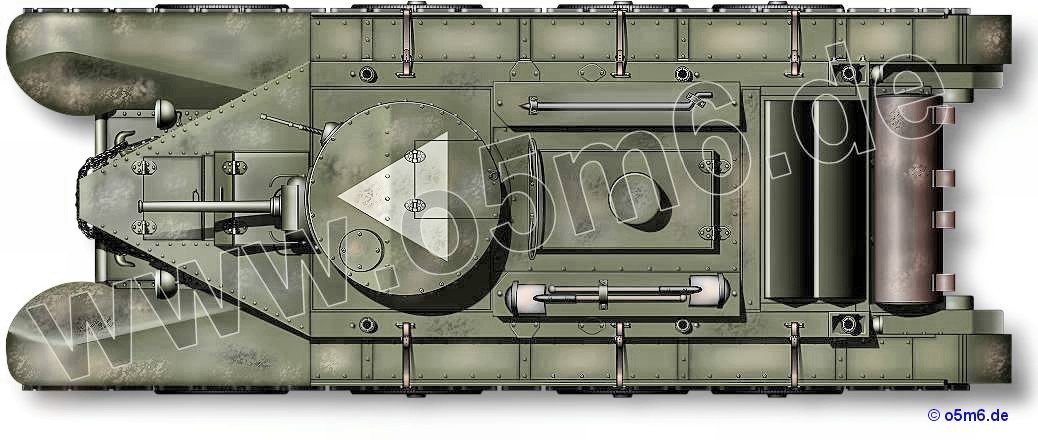
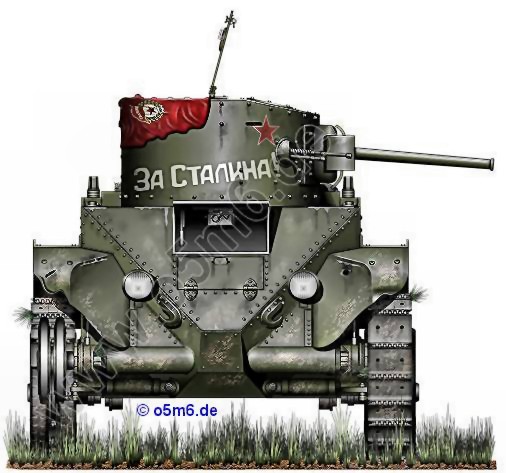
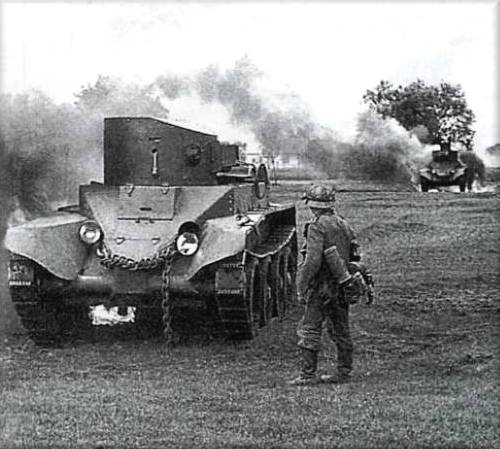
All drawings © o5m6.de .All rights reserved.
No publication in any form without the author's written permission.
Last Updated: September 20, 2007
No publication in any form without the author's written permission.
Last Updated: September 20, 2007